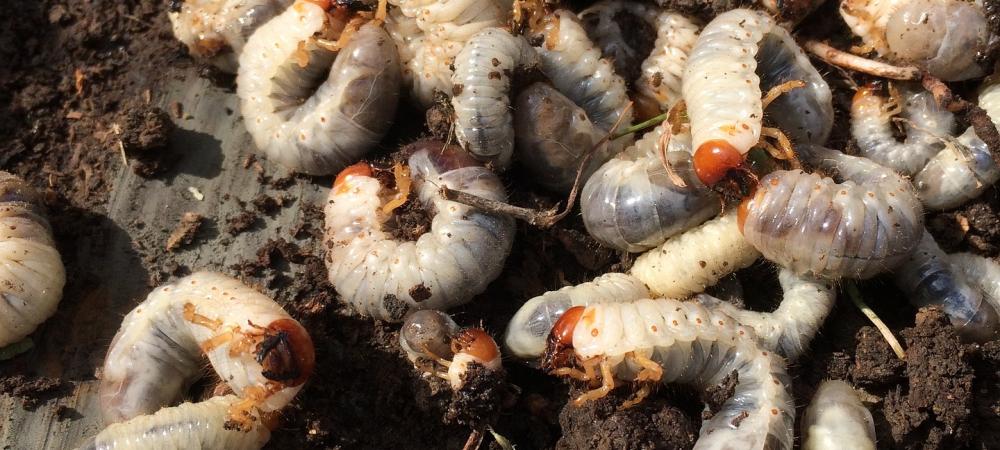White Grubs In My Lawn

Have you been noticing persistent brown areas on your lawn? Perhaps you thought they were dry areas in need of water. If watering doesn't make the areas greener, then you could have an infestation of white grubs which are the larvae of beetles.
What Are White Grubs?
White grubs are the larval form of the scarab beetle, a diverse beetle family that is widespread on every continent except Antarctica. There are more than 1,500 scarab beetle species in North America, and many of these species thrive in Florida. Most scarabs lay their eggs 1 to 8 inches deep in the soil. The eggs hatch in about three weeks into larvae and begin to feed on the roots. The larvae take over three years to develop into adult beetles. During this life cycle, the larvae migrate deeper into the soil during the cooler months where they remain inactive until spring when they return to the soil surface ready to feed again
White grubs are the larvae of these beetles:
- Japanese Beetle
- Green June Beetle
- Masked Schafer Beetle
- June Beetle
- Black Turfgrass Ataenius Beetle
How To Know If You Have Grubs
The test for white grubs or lawn grubs is simple. Grab some grass in your hand and pull up. If the grass is infested, then a patch of grass and its sod will easily pull right out of the ground. If you turn the sod upside down, you will see the grubs on the underside curled into C shapes. The reason the grass and its sod pull out so easily is that most of the roots have been eaten away by grubs. If you don't want to get on your knees to test for them, shovel three sides and lift up the patch of grass.
White grubs thrive in sun-exposed grass that's growing in moist soil with lots of organic matter. If you've been keeping your grass well watered during dry weather, then it will act like a grub magnet since your lawn is the only suitable place for them to live.
White Grub Damage
Adult scarab beetles are typically not turf pests, but white grubs are some of the most destructive turfgrass pests in Florida. White grubs tunnel through the soil and feed on plant roots, leading to irregular patches of dead turf. The damaged grass wilts in the sun, and the effects are similar to drought damage.
Signs Of A White Grub Infestation
Few homeowners really know the danger that white grubs create for their yards. Unfortunately, these pests lurk underground and can be hard to spot. Utilize the following signs and symptoms to know when they've arrived:
- Persistent brown patches: Although your lawn isn't likely to mature all at the same time, persistent brown patches almost always indicate white grubs. These spots are where they are focused and centered, giving you a nice little "heads-up" on where to find them.
- The sudden appearance of dead spots: During the middle of summer, you might suddenly see dead spots appearing throughout your lawn. This usually indicates a hatching of white grubs, especially if you've noticed an excess of flies in your yard.
- Invading lawn pests: White grubs are a tasty treat for mammals such as raccoons, skunks, birds, possums, and even moles. If your lawn looks torn apart, it's possible that one of these animals was feeding on the grubs during the night.
- Spongy lawn texture: A serious enough invasion of white grubs is likely to seriously impact the density of your lawn and create an annoying spongy texture. Left alone, this can actually cause your lawn to break apart into small blocks of dirt.
All of these symptoms point to serious damage occurring in your lawn. And there's only one thing you can do about it: call a professional pest control agent right away. They will find a solution and help you eliminate the white grubs that are attempting to destroy your yard.
White Grub Control
Venice Pest Control has provided pest control services in Sarasota and Charlotte counties since 1974. Turf pests are one of our specialties. Contact us today for a free lawn evaluation.
